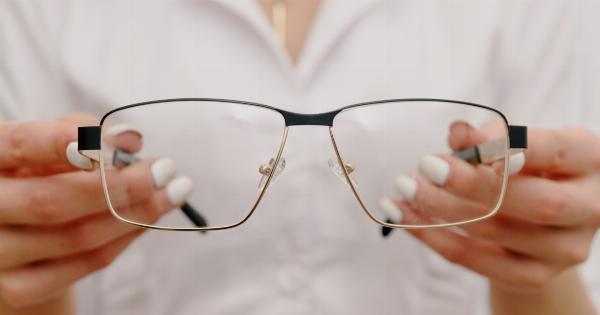A stroke occurs when a part of the brain is damaged due to a lack of blood supply caused by a blockage or bleed in the brain.
Strokes can cause various symptoms, and while many people associate them with weakness or numbness in the arms or legs, they can also affect the eyes. Therefore, it is essential to know the eye symptoms of stroke so that you can act quickly and seek medical help to prevent further damage.
What Are the Eye Symptoms of Stroke?
Strokes can affect the eyes in different ways. Some of the most common eye symptoms of stroke include:.
1. Blindness in One or Both Eyes
One of the most apparent eye symptoms of stroke is partial or complete blindness in one or both eyes. This condition is called homonymous hemianopia, and it means that you have lost half of your visual field in each eye.
If you experience this symptom, seek medical attention immediately, as it can indicate a serious stroke.
2. Blurred or Double Vision
Another common eye symptom of stroke is blurred or double vision. This can happen suddenly and affect one or both eyes. If you notice a sudden change in your vision, it could be a sign of a stroke.
3. Pupils Unequal in Size
If one pupil suddenly becomes larger or smaller than the other, it could be a sign of a stroke. This condition is called anisocoria, and it is an abnormality in the size of the pupils.
4. Droopy Eyelid or Facial Weakness
If you have a droopy eyelid or experience facial weakness, it could be a sign of a stroke. This condition is called ptosis, and it occurs when the muscles that control the eyelid weaken or become paralyzed.
5. Loss of peripheral vision
Peripheral vision loss is not uncommon in stroke patients. This condition causes a loss of vision in the outer areas and sides of the visual field, where motion and shapes are seen.
6. Nystagmus
Nystagmus is an involuntary eye movement that can occur as a result of a stroke. It’s characterized as moving the eyes up and down repeatedly or side to side.
7. Sensory Changes
If you experience tingling, numbness, or pain in one or both eyes, it could be a sign of a stroke. Sensory changes can also affect other parts of the body, such as the arms or legs.
8. Visual Disturbances
Visual disturbances such as floaters, halos, or flashes of light can also be a result of a stroke. These symptoms are mostly related to the movement of objects and things you see around.
9. Vision Changes with Head Movements
If your vision changes, worsens, or you experience a momentary loss of sight when you move your head quickly, it could be a sign of a transient ischemic attack.
10. Sudden Loss of Vision
Sudden loss of vision in one or both eyes, especially if it occurs without any pain or redness, could be a sign of a stroke.
What Should You Do if You Experience These Symptoms?
If you experience any of these eye symptoms of stroke, do not ignore them, even if they go away quickly. Seek medical attention immediately, as early treatment can reduce the risk of complications and improve your chances of recovery.
Conclusion
While not all cases of visual disturbances are linked to a stroke, it’s always best to see an ophthalmologist if you experience any such symptoms.
It is essential to understand that a stroke can cause damage to your eyes, and identifying the symptoms can play a vital role in treating the condition. If you or someone you know is experiencing any of the eye symptoms of stroke, seek medical attention immediately.

























